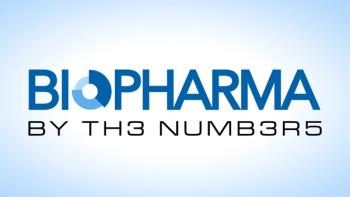
$1.8M RedHill Deal Highlights Growing Worldwide Focus on H. pylori Treatment Access
Key Takeaways
- Talicia, combining amoxicillin, rifabutin, and omeprazole, is FDA-approved for H. pylori, addressing antibiotic resistance and reducing gastric cancer risk.
- H. pylori affects 35% of US adults and up to 80% in the Middle East, posing significant gastric cancer and peptic ulcer risks.
By licensing Talicia to priority markets, RedHill targets growing antibiotic resistance to the cancer-associated H. pylori bacteria with an FDA-approved, fixed-dose therapy
What is Talicia, what is H. pylori, and why does this treatment fill a need?
The all-in-one, low-dose rifabutin-based therapy is the only one of its kind approved by FDA that addresses resistance to other antibiotics commonly used to treat the bacterial infection Helicobacter pylori, which is a key risk factor for gastric cancer. According to RedHill, gastric cancer causes approximately 800,000 deaths per year globally; however, eradication of H. pylori could lead to a 75% decrease in gastric cancer risk (1).
In a press release announcing the agreement, RedHill said H. pylori, classified by the World Health Organization as a Group 1 carcinogen, affects approximately 35% of the US adult population, with an estimated 1.6 million people treated annually, rising to 50% worldwide and nearly 80% in parts of the Middle East (1). The infection is also a major risk factor for peptic ulcer disease and gastric mucosa-associated lymphoid tissue lymphoma.
Although H. pylori eradication is known to have a potential major impact on gastric cancer and other risks, current therapies fail in anywhere between 25% and 40% of patients, who remain H. pylori-positive because of the bacteria’s high resistance to antibiotics, including the standard therapy clarithromycin (1).
What could this agreement mean for global expansion of other treatments?
A strategic licensing agreement for specialized treatments such as this illustrates a global trend toward leveraging regional partnerships to secure non-dilutive revenue streams while targeting specific disease hotspots. It suggests a template for expanding other innovative therapies aimed at infectious diseases, particularly those known to be major risk factors for cancer. Addressing high-prevalence areas, such as the Middle East where H. pylori rates approach 4 in 5, demonstrates how targeted market building can fulfill significant unmet medical needs globally.
The broader global landscape demands diversified therapeutic strategies against complex conditions like gastric adenocarcinoma. This involves the concurrent advancement of both large biologic immunotherapies, which are rapidly expanding into curative-intent, earlier-stage disease settings, and novel small-molecule approaches. Small-molecule immuno-oncology agents, for example, offer potential synergy with existing biologics by targeting non-traditional immune pathways. For any modality to succeed internationally, the necessity for robust evidence standards and operational readiness is paramount, whether for a complex fixed-dose combination therapy or large biologic under priority review, based on thorough chemistry, manufacturing, and controls planning and data integrity from before the investigational new drug phase through commercial readiness.
Are other gastric cancer treatments available?
RedHill’s development of Talicia goes back more than a decade;
In July 2025, FDA
The patent for Talicia is protected through 2042 and, in the US, the treatment received eight years of market exclusivity following its November 2019 FDA approval via a Qualified Infectious Disease Product designation (1).
References
1. RedHill Biopharma.
2. Recipharm.
3. Cole, C.
4. Mirasol, F.
Newsletter
Stay at the forefront of biopharmaceutical innovation—subscribe to BioPharm International for expert insights on drug development, manufacturing, compliance, and more.





